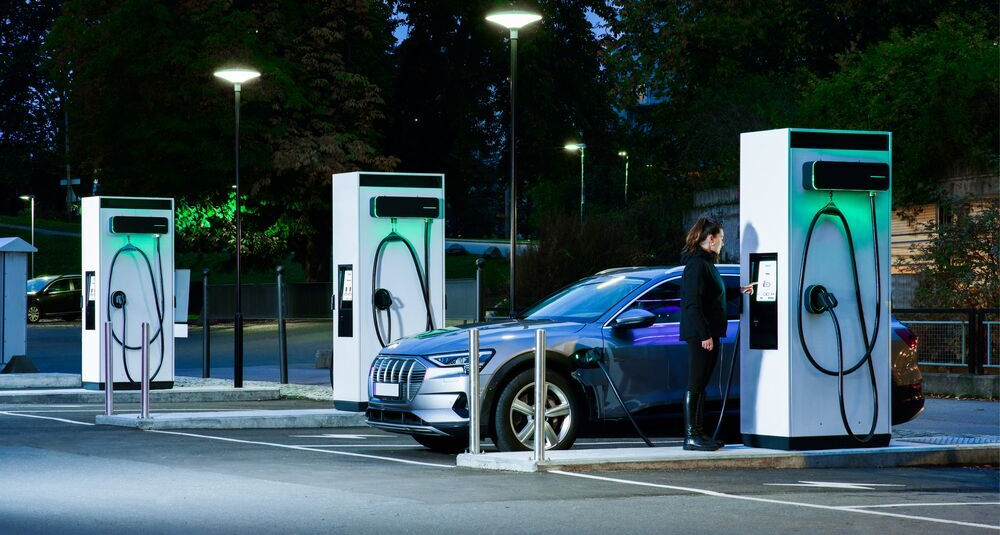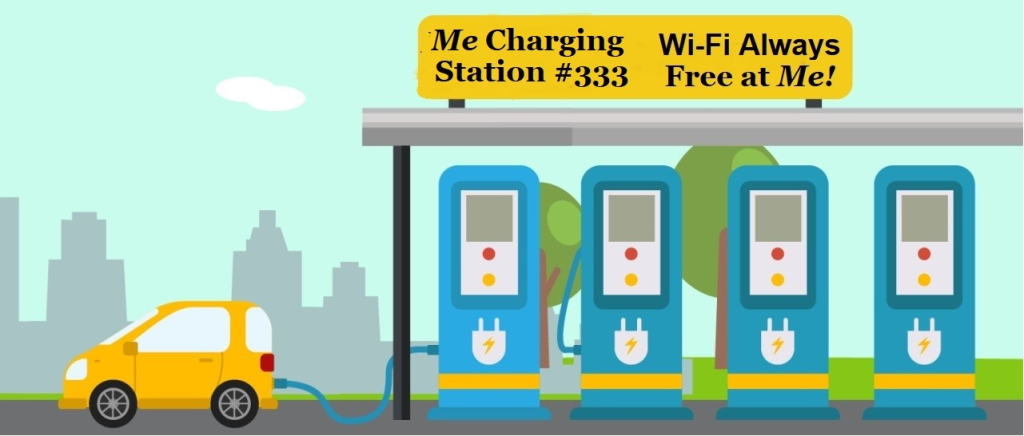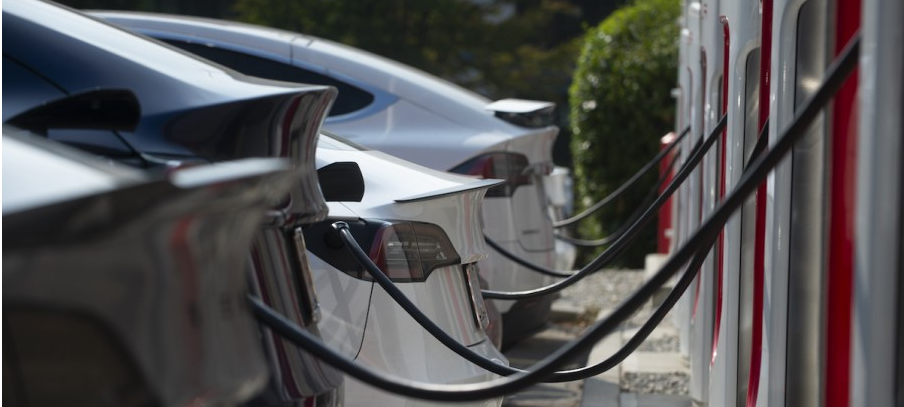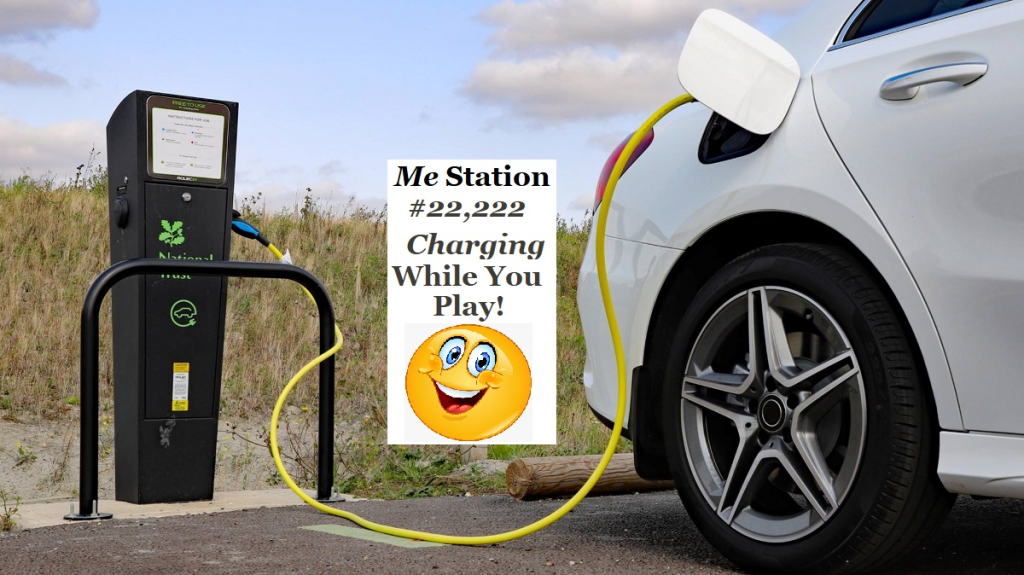Why-N-Hell is Biden pushing EV Charging Stations?

Could it possibly help today’s up-n-coming Entrepreneur?
2012 to 2023
Beyond direct revenue, EV charging stations can help attract new customers, increase the time they spend at your business’s location and unlock cross-selling opportunities.
Today’s EV charging stations are about more than just preparing your business for the shift in the type propellant used for transportation—it’s also a clear-cut path to attracting more customers and generating more profit for entrepreneurs!
In today’s competitive landscape, businesses must think of creative ways to attract customers while also boosting the value of each transaction. Transforming a business location into an EV charging destination is one of the simplest ways to do accomplish that task.
Once EV drivers stop to ‘charge’, there is an obvious cross-selling opportunity for add-on products and services. And today (2024), EV drivers are more likely to stop in the less than saturated EV-Charging Station community simply because the next Charging Station may be a hundred-or more miles away!
Depending on the type Charging Station you choose to compliment your business, EVs can require anywhere from a few minutes to a couple of hours for re-charging (depending on battery size). For restaurants, gift shops or gas stations, a fast (DC) charging solution may be an ideal choice, charging even the largest EV batteries within an hour. The ideal location for 8-hour-plus AC Charging Stations brings to mind thousands of hotels, beech front condominiums or tourist courts; while short term 3 to 4-hour Charging Sites might include Amusement Parks or Public Beaches.
According to the EY Mobility Consumer Index (MCI), an annual study that gauges car buying intent, as recently as 2023, reported that 52% of car buyers were considering an EV for their next auto purchase. As a consequence, locking in your location now as one of the places that provide EV ‘charging’ could turn your business into an often-frequented EV charging destination.

But first, be aware of that Plug-in hybrid vehicles or PHEVs are not EV equivalents. That’s because PHEVs are not entirely reliant on electricity like EVs. PHEVs come equipped with a gas tank and a combustion engine, capable of engaging for additional power should the batteries run low or fail to recharge.
So, before Before you go plugging in your PHEV, it’s best to first understand the three levels of the EV charging infrastructure. The U.S. Department of Transportation outlines the distinctions as follows:
Level 1: The common residential 120-volt AC outlet can take 10-20+ hours to charge an EV to 80% from empty and 5-6 hours for top off a PHEV.
Level 2: The next quickest form of charging uses a 240-volt application, often found in residences, workplaces, and public Charging Stations. This level can charge a PHEV from depletion to full charge in one to two hours or can charge a EV to 80% from empty in 4-10 hours.
Level 3: The fastest charging mechanism, aka, Direct Current Fast Charging (DCFC), enables “rapid charging” at 480 Volts or higher; where a Pure EV can be recharged to 80% capacity within 20 to 30 minutes. However, PHEVs are not compatible. In fact, the batteries powering PHEVs aren’t designed to accommodate Level 3 charging since they’re only capable of ‘storing’ about 10% of the charging capability of a fully-electric vehicle or EV.

Another thing, unless you’ve invested in one of those Tesla EVs, you should know a non-Tesla EV cannot use a Tesla Charging Station without an adapter! And then on Level 1 & 2 Charging Stations only! Yep,Tesla has thousands of high-speed Superchargers aka Level 3 Chargers but only for Tesla vehicles, and there aren’t any adapters available that will allow you to use a Supercharger if your EV is not a Tesla. Yep, there have been rumors that Tesla may open up its Supercharger network for other electric vehicles to use in North America, but so far, rumors are as close as it gets!
The Tesla Supercharger network is an electric vehicle fast charging network built and operated by U.S. vehicle manufacturer Tesla, Inc. The Supercharger network started out way back in late September of 2012, with six sites in California and Nevada. But, they have grown, as of July 2024, Tesla was operating a network of 6,500 Supercharger stations with nearly 60,000 Supercharger port connectors worldwide- 27,772 of which are in the USA.
June 27, 2023
Perhaps you thought the Biden-Harris Administration was asleep at the wheel throughout the entirety of their 4 year term. While no one denies that, turns-out that as they were sleeping, a good bit of dreaming was in-play while simultaneously driving forward toward a Convenient, Reliable, Made-in-America, National Network of Electric Vehicle SuperCharging Ports.
The U.S. government program designed to speed up the number of EV Charging Stations across America is better known as the National Electric Vehicle Infrastructure program (NEVI). Such Charging Infrastructure is estimated to create more than 160,000 jobs by 2032 in job categories ranging from electrical installation, maintenance and repair, software maintenance and repair, planning and design and the assembly of new Chargers here within the U.S.

Perhaps it’s only coincidental that 2023’s gift to the world included temperatures that, according to data from Copernicus, the European Union’s climate and weather monitoring service, averaged 1.52 degrees Celsius (2.74 degrees Fahrenheit) hotter on average than temperatures before the first industrialization era of Western Europe and North America which began in the mid-18th to the early 19th century.
To make that 12-month ‘gift’ more frightening, that average temp was boosted by the hottest January (2024) on record, which was 1.66 degrees Celsius (2.99° F) warmer than the average January temperature in pre-industrial times!
Worse, the first six months of 2024 each set new temperature records, extending an already remarkable streak of 13 consecutive record-breaking months dating back to, you guessed it, 2023. Then on Sunday, the 22nd of July, 2024, the world experienced the hottest day ever recorded on Earth, yep, that’s right, the highest global daily temperature on record! The average global temperature reached 17.09 degrees Celsius, or about 62.76° Fahrenheit, which is above the record set in July of 2023!
To add insult to injury, The American Association for the Advancement of Science (AAAS) has stated that “Based on the evidence, about 97 percent of climate scientists agree that human-caused climate change is happening”. Causes they say range from an increase in the concentration of atmospheric greenhouse gases; including chlorofluorocarbons, methane, tropospheric ozone, nitrous oxide and most of all, Carbon Dioxide or COշ.
Point being, all this makes it rather difficult to deny that higher COշ atmospheric levels are constantly being created by the burning of fossil fuels such as Coal, Oil and Natural Gas by the industrialized world or by us! And, 37% of that COշ comes from the transportation sector!
2024

Having acknowledged that, during the first four months of this year (2024), the COշ concentration increased more swiftly than it has during the first four months of any previous year on record! The result: In-climate weather has become the new norm!
Sooo,— (unless you really believe there is an Easter Bunny; a Tooth Fairy; that “Jewish” lasers in space are setting forest fires in California; that the “Government” really is creating hurricanes in the Gulf of Mexico; that the popular Powerball Lottery, played in 45 states, Washington D.C, the U.S. Virgin Islands, and Puerto Rico was created to catch time-travelers; or that a reality TV game show host was elected as the 45th U.S. President who is now a convicted Felon, who has committed sexual assault, ran a fraudulent charity, headed a discredited university, ripped off lots of blue collar Contractors, had a presidential election “stolen” from him a few years back, is a huge compulsive liar and is again a major political Party’s Presidential Candidate)—you just might acknowledge there is some chance the Biden-Harris Administration dreamed-up the the National Electric Vehicle Infrastructure program (NEVI) for the betterment of the nation! Guess though, we can hope the 11 million or so unauthorized migrants stick to the fruit picking profession, huh?
Anyway, want to Know how much can be really be earned from EV Charging Stations per month? Then check out the info on the next couple of pages.

EV Charging Stations in the U.S. are both unregulated and non-transparent, in-other-words, currently it’s still the “Wild, Wild West” out there. Pricing often varies substantially from one facility to another.
Believe it or not, some EV charging stations are free. These are typically found at shopping centers and supermarkets, and you can use them to top up your vehicle while shopping. Also, a few employers offer free EV charging as an employee incentive at their offices.
The California example below likely reflects about where pricing will end-up:
Level 2 charging costs about 30 cents per kWh.
Level 3 or DC fast charging is roughly 40 cents per kWh.
California’s average consumer piece per kWh = 19.9 Cents
_______________
Charging Station Options- a Review
Level 1: The common residential 120-volt AC outlet can take 10-20+ hours to charge an EV to 80% from empty and 5-6 hours for a PHEV. (Sorry, not a viable commercial EV Charging System).
Level 2: The next quickest form of charging uses a 240-volt application, often found in residences, workplaces, and public Charging Stations. This level can charge a PHEV from depletion to full charge in one to two hours or can charge a EV to 80% from empty in 4-10 hours. . . A level 2 charger will get you about 40 miles worth of charge in an hour, which is 4-6 times faster than a level 1 charge. . . The average cost of installing a Level II EV charger for Commercial use typically ranges between $6,000 and $12,000 per unit. This estimate includes the price of the charger, various electrical upgrade requirements and labor.
Level 3: The fastest charging mechanism, aka, Direct Current Fast Charging (DCFC), enables “rapid charging” *at 480 Volts or higher; pure EVs can be recharged to 80% capacity within 20 to 30 minutes. However, PHEVs are not compatible with DCFC Charging Stations. In fact, the batteries powering PHEVs are only capable of about 10% of the charging capability of a fully-electric vehicle or EV. . . A level 3 DCFC station will range from $12,000-$35,000 for the charger with labor cost and associated hardware included.
Conclusion: If you choose to invest in this, do not quit your day-job!
___________
Sources:
https://www.boredpanda.com/most-absurd-conspiracy-theories/
https://www.cnn.com/2024/02/08/climate/global-warming-limit-climate-intl/index.html
https://www.soonplus-ev.com/news/ev-charging-times-chart/
https://en.wikipedia.org/wiki/The_Apprentice_(American_TV_series)
https://www.carbonbrief.org/state-of-the-climate-2024-now-very-likely-to-be-warmest-year-on-record/
https://www.powerball.net/participating-states
https://www.unepfi.org/themes/climate-change/climate-risks-in-the-transportation-sector/
https://www.npr.org/2024/06/06/nx-s1-4992290/carbon-dioxide-record-high-atmosphere
https://www.factcheck.org/2024/05/qa-on-trumps-criminal-conviction/
Can You Imagine That?